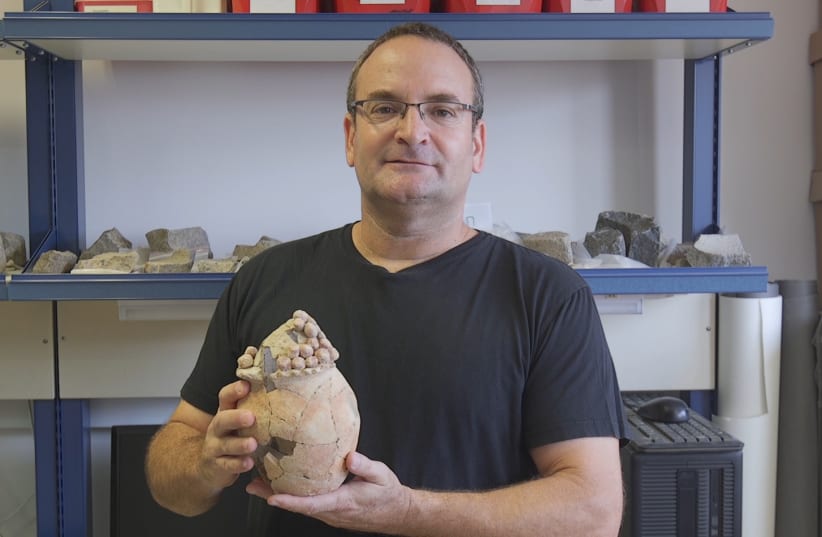A Related Video You May Like:
The discovery was made during excavations led by the Antiquities Authority at the City of David National Park, supervised by archaeologist Eli Shukrun.The coin, minted by Jews in 69 CE, a year before the destruction of the Second Temple, features the words “For the Redemption of Zion” in ancient Hebrew script, with an image of a goblet under the inscription. On the back of the coin is an image of the Four Species used on Sukkot and the words “Year Four” – representing the fourth year of the Jewish rebellion against the Romans. In 70 CE, the revolt was subdued and the Second Temple destroyed.“The Jews minted coins throughout the entire period of the revolt, but in the fourth year of the five-year rebellion, we see that instead of the words ‘Freedom for Zion,’ the coins were minted with the words ‘For the Redemption of Zion,’” Shukrun said.The coin was found in soil extracted from the drainage canal at the City of David National Park, which passed underneath Jerusalem’s main street at the end of the Second Temple period. According to the writings of Josephus Flavius, and based on archaeological evidence, the last remaining Jewish rebels hid from the Romans in this drainage canal.World’s oldest brewery found in a cave in northern IsraelUniversity of Haifa and Stanford University researchers discovered the earliest evidence of alcohol production, from 13,000 years ago, in the Rakefet Cave in the Carmel, they announced earlier this month.Archaeologists analyzed three stone mortars from the 13,000-year-old Natufian burial cave site in Israel, concluding that these mortars were used for brewing wheat/barley, as well as for food storage.The researchers explained that the earliest archaeological evidence for cereal-based brewing, even before the advent of agriculture, comes from the Natufians – a semi-sedentary, foraging people, living in the eastern Mediterranean between the Paleolithic and the Neolithic periods, following the last ice age.The Natufians at Rakefet Cave collected locally available plants, stored malted seeds and made beer as a part of their rituals, according to the study. The researchers found evidence of several different grains stored in mortars, including wheat, barley, oats, legumes and flax.An examination of two mortars found microscopic remains of starch grains that underwent morphological changes that correspond to changes in starch that occur in the process of fermentation. The evidence indicates that the craters were used to store grains before and after fermentation.Previously, the earliest evidence of alcohol has been found in pottery from the Neolithic village Jiahu, near the Yellow River in China, which dates to about 7,000 BCE.Several of these stories were originally reported by late Jerusalem Post reporter Daniel K. Eisenbud, a talented journalist who had a passion for archaeology. Eisenbud died in March 2018.
Israeli archaeology uncovers 500,000 years of history
University of Haifa and Stanford University researchers discovered the earliest evidence of alcohol production, from 13,000 years ago, in the Rakefet Cave in the Carmel.
